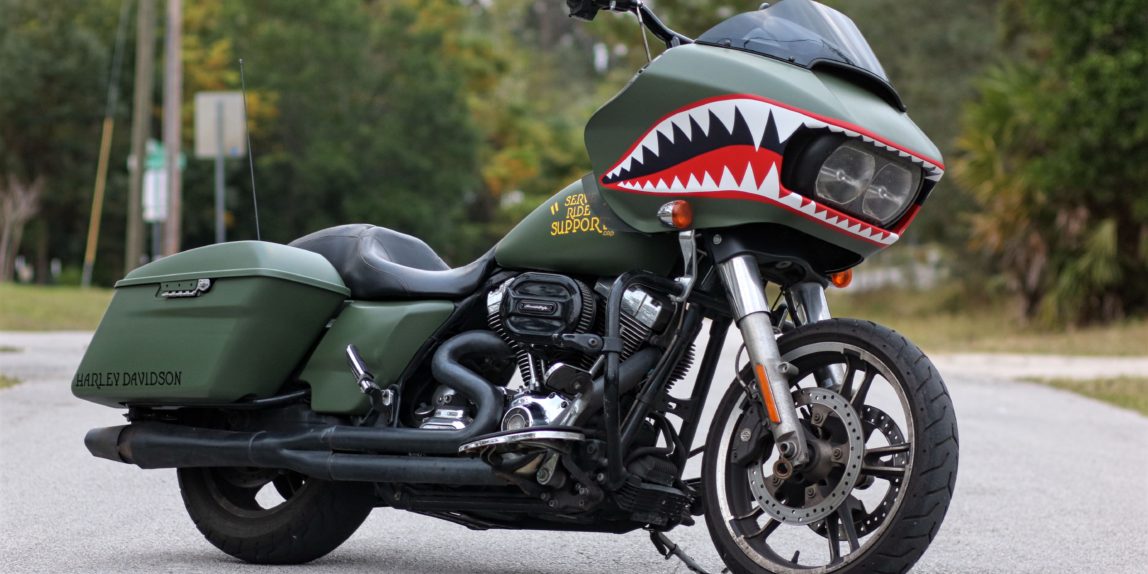Personal expression can be achieved in many ways when talking motorcycles and Harley Davidson was able to see that early on. One can go to the dealership and pick out a bike for bar hopping, short trips, cross-country and even one that serves as a show piece all depending on what place they see themselves in the motorcycle community. It’s amazing to think that every bike on the road is different and is a reflection of the owner, this will never stop.
When the idea of riding a motorcycle across the country as “Serve. Ride. Support” presented itself to me it was without question that I had the perfect bike for the trek, a Superior Blue 2015 Harley Davidson Road Glide Special (FLTRXS). I purchased this bike new from the dealer in Baton Rouge, LA in July 2015 to replace to 2002 Road Glide I had been abusing for years and just a week or so later we were on our first adventure to the 75th Sturgis Rally in South Dakota. Since then I have logged 62k trouble-free miles all over the United States with only one issue, no direction. This is where it all starts to come together and the transformation begins. Long distance riding is a style that I very much enjoy and in my opinion stands out in the world of motorcycle riding; so why shouldn’t the machine do the same? A glossy blue Harley touring bike with pinstripes is a gorgeous bike out of the box but I felt it needed to reflect the mission of Serve. Ride. Support. The goal was to maintain an eye-catching appearance, bear resemblance to military machines and showcase the particular generation we are recognizing with this run.
In comes the nose art indicative of WWII aircraft to save the day! How so? Well first lets define nose art as “artwork that was typically painted on the nose of the plane, and the term “nose art” was coined.” As the United States entered World War II, nose art regulations were relaxed, or in many cases totally ignored and WWII would become the golden age of aircraft artistry. Some of the most recognizable nose art was the shark-face of the Flying Tigers on the P-40 aircraft.
So began the transformation of the blue beauty into what it is today a mean, green machine whose task is recognizing the men and women of the armed forces with focus on the veterans of WWII.
